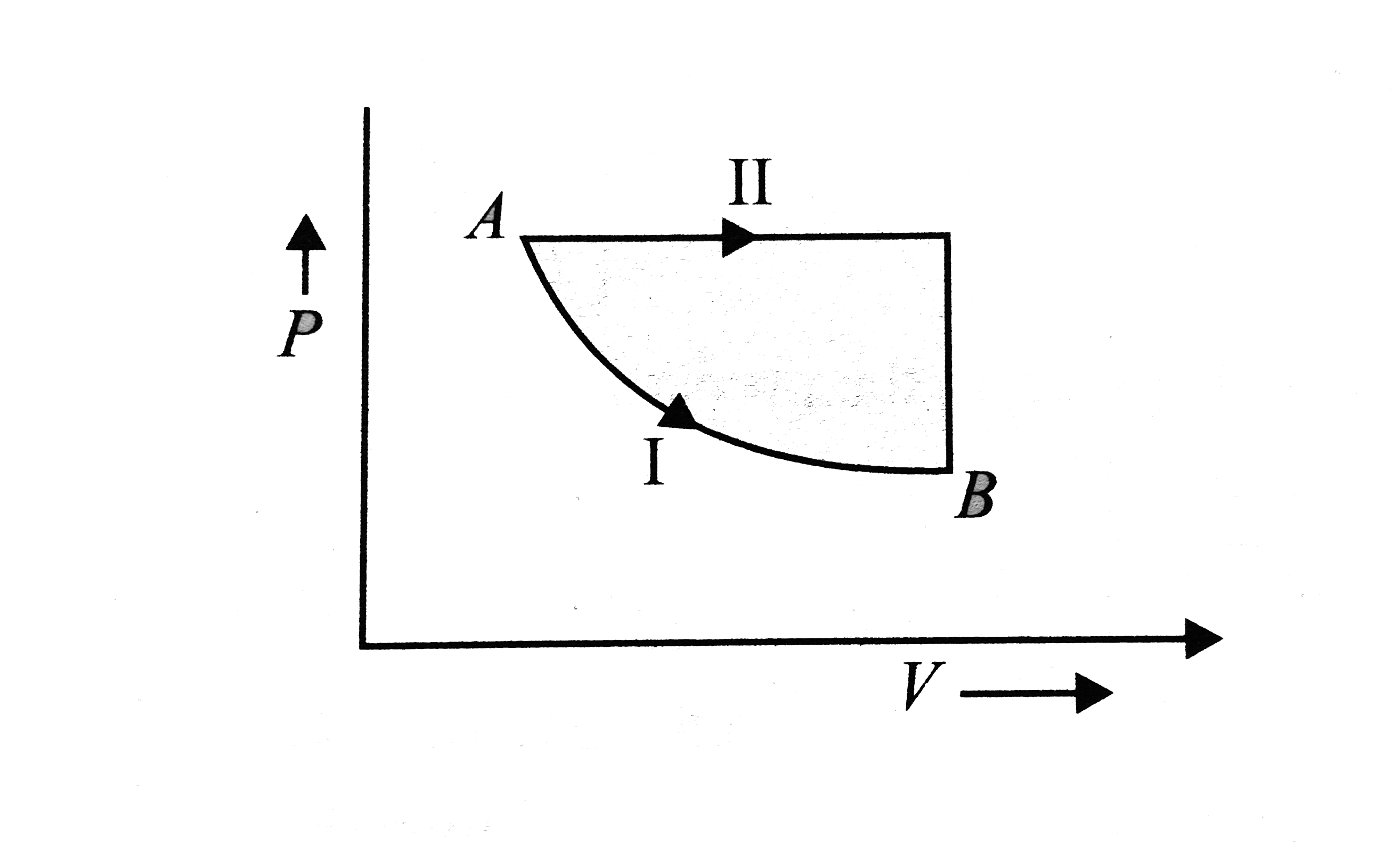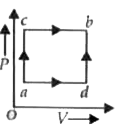A perfect gas goes from state A to another state B by absorbing 8 x 105 J of heat and doing 6.5 x 105 J of external work. It is now transferred between the same two states in another process in which it absorbs 105 J of heat. Then in the second process,
work done by gas is 105 J
work done on gas is 105 J
work done by gas is 0.5×105 J
work done on the gas is 0.5×105 J
The correct Answer is:D
dU=dQ−dW=(8×105−6.5×105)=1.5×105 J
dW=dQ−dU=105−1.5×105=−0.5×105J
−ve sin indicates that work done on the gas is 0.5×105 J.
Topper's Solved these Questions
- THERMODYNAMICS BOOK - DISHA PUBLICATIONCHAPTER - THERMODYNAMICS EXERCISE - EXERCISE-1 : CONCEPT BUILDER (Topic-3 CARNOT ENGINE, REFIGERATOR AND SECOND LAW OF THERMODYNAMICS)
15 Videos
- THERMAL PROPERTIES OF MATTER BOOK - DISHA PUBLICATIONCHAPTER - THERMAL PROPERTIES OF MATTER EXERCISE - Exercise-2 (Concept Applicator)
28 Videos
- WAVE OPTICSBOOK - DISHA PUBLICATIONCHAPTER - WAVE OPTICSEXERCISE - EXERCISE-2 : CONCEPT APPLICATOR
30 Videos
Similar Questions
A perfect gas goes from a state A to another state B by absorbing 8 × 105 J of heat and doing 6.5 × 105 J of external work. It is now transferred between the same two states in another process in which it absorbs 105 J of heat. In the second process
View SolutionA certain mass of is taken from an initial thermodynamics state A to another state B by process I and II. In process I for the gas does 5J of work and absorbs 4J of heat energy. In process II, the gas absorbs 5J of heat. The work done by the gas in process II is

View Solution
Knowledge Check
A perfect gas goes from state A to another state B by absorbing 8 x 105 J of heat and doing 6.5 x 105 J of external work. It is now transferred between the same two states in another process in which it absorbs 105 J of heat. Then in the second process,
AOn gas is 105JBOn gas is 0.5×105JCBy gas is 105JDBy gas is 0.5×105JA gas undergoes change from state A to state B. In this process, the heat absorbed and work done by the gas is 5 J and 8 J, respectively. Now gas is brought back to A by another process during which 3 J of heat is evolved. In this reverse process of B to A:
A6 J of the work will be done by the gasB6 J of the work will be done by the surrounding on gasC10 J of the work will be done by the surrounding on gasD10 J of the work will be done by the gasA gas expends from 1.5 to 6.5 L against a constant pressure of 0.5 atm and during this process the gas also absorbs 100 J of heat. The change in the internal energy of the gas is
A153.3JB353.3JC−153.3JD−353.3J
When a gas is taken from one state a to another state b via one path, it absorbs 25calories of heat while doing 70J of work. How much heat much heat has to be supplied in taking the same gas from state a to state b via another path when it performs 200J of work?
View SolutionA gas undergoes a change of state during which 100J of heat is supplied to it and it does 20J of work. The system is brough back to its original state through a process during which 20 J of heat is released by the gas. What is the work done by the gas in the second process?
View SolutionWhen a system goes from state A to state B, it is supplied with 400 J of heat and it does 100 J of work.
(a) For this transition, what is the system's change in internal energy?
(b) If the system moves from B to A, what is the change in internal energy?
(c) If in moving from A to B along a different path in which W′AB=400J of work is done on the system, how much heat does it absorb?
View SolutionWhen a system is taken from stata a to state b along the path acb as shown in figure, 60 J of heat flows into the system and 30 J of work is done by the system. Along the path adb, if the work done by the system is 10 J, heat flow into the system is

View Solutionwhen a gas expands from 1. 5L to 6.5 L againt a constant pressure of 0.50 atm and during process , the gas also absorbs 100 J of heat. The change in internal energy is
View Solution
